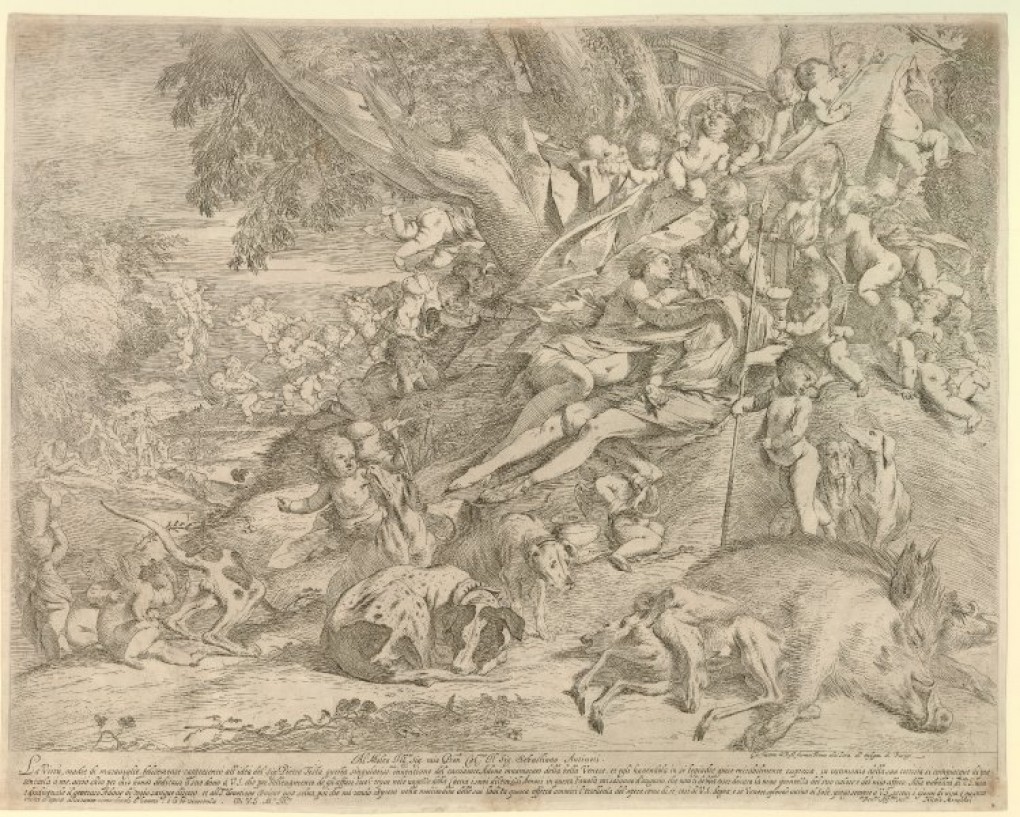A larger work
At some point in time, the painting was cut down, rather roughly, on all four sides, leading some scholars to conclude that it is a fragment of a larger work. Perhaps, they have posited, the original composition was similar to that of a print by the Italian artist Pietro Testa, in which Venus and Adonis are depicted in a landscape with dogs and putti (naked children). The boy in Titian’s painting adopts the same pose as one of the putti in Testa’s print, and indeed Titian had previously dealt with the same subject matter.






